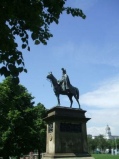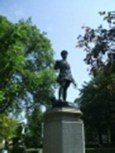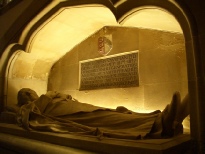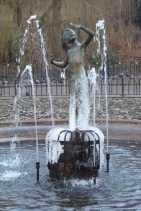Llandaff -



Sir William Goscombe John -
2010 marks the 150th anniversary of the birth of one of Cardiff’s illustrious, yet strangely neglected, sons -
His statues and monuments adorn many British towns, and several overseas, and fortunately for us, there are many in Cardiff and Llandaff. His fine equestrian statue of Viscount Tredegar and the statues of Lord Ninian Crichton Stuart, John Cory and Judge Gwilym Williams are in the Civic Centre. In the City Hall is a statue of St David, in Thompson Park his statue‘Joyance’, and in St Fagans can be seen ‘The Elf’.
William Goscombe John was born in Canton and, although the street has now disappeared, it was behind the pub now called ‘The Goscombe’. Named William John, he later adopted the name Goscombe whilst living with two other William Johns. It was a name associated with his mother’s Somerset family.
His father, Thomas John, was a wood-

© Gordon Lawson
He and his father were both members of Llandaff Cathedral Choir and, as the Victorian restoration of the Cathedral had just been completed, he would have been aware of the Pre-
In 1881, William left Cardiff to pursue his career and studies in London, Italy and Paris. But by the 1890’s he returned and received many commissions from Cardiff. One was for a monument to Dean Vaughan, who had died in 1897, whom he would have known. The resultant marble effigy was exhibited in the Royal Academy Exhibition of 1900.
He was obviously proud of it, because he recorded that, at the Royal academy Dinner of 1900, he met Lord Windsor (later to become the Earl of Plymouth) and persuaded him to make a special point of going to see his statue. When, in 1902, Lord Windsor became First Commissioner of Works, he commissioned William for the Westminster Abbey monument to the former Prime Minister, the Third Marquis of Salisbury.

© Gordon Lawson


© Elaine Davey